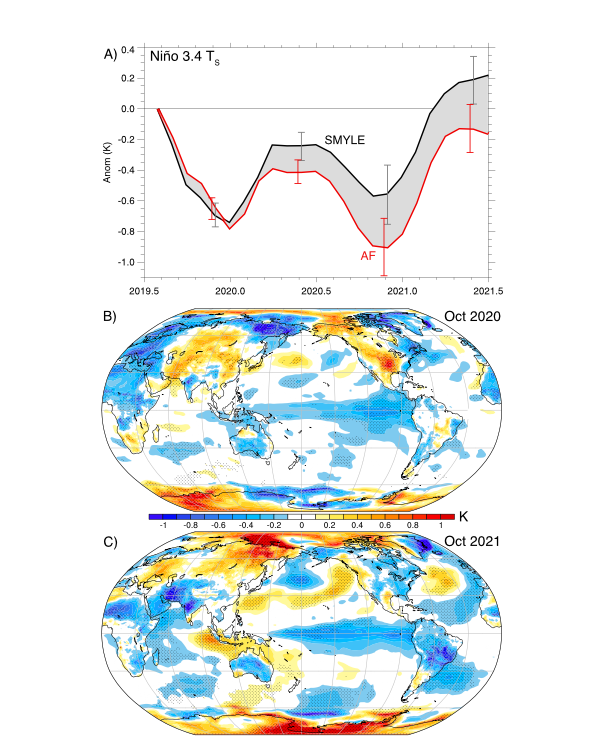A Multi-Year Tropical Pacific Cooling Response to Recent Australian Wildfires in CESM2
The coupled climate response to biomass burning emissions from the 2019/20 Australian wildfire season is estimated from the contrast between two 30-member ensembles using CESM2 initialized in August 2019: one of which incorporates observed wildfire emissions while the other does not. In response to the fires, a widespread increase in biomass aerosol burdens is simulated in the southern hemisphere through late 2019 and early 2020. Accompanying the increase is an enhancement of cloud albedo, particularly in regions of widespread stratocumulus clouds in the southeastern subtropical Pacific Ocean. The increase in albedo acts to cool the surface, dry the boundary layer, and reduce the moist static energy of the advected low-level flow into the deep tropics. It also cools the ocean locally and the currents that flow into the deep tropics. In response, the Intertropical Convergence Zone is found to migrate northward and sea surface temperature in the Niño3.4 region cools. A subsequent multi-year ensemble- mean cooling of the tropical Pacific is simulated through the end of 2021, suggesting an important contribution to the ongoing strong La Niña event.

